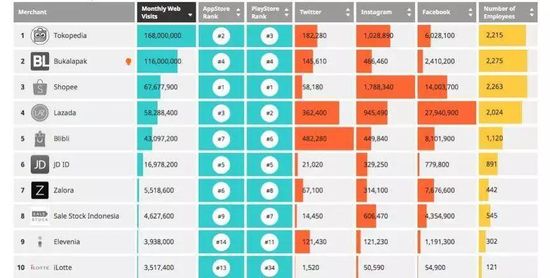A few days ago, the Indonesian government announced that it would reduce the import tax exemption threshold for e-commerce goods from $ 75 to $ 3 to restrict the purchase of cheap foreign products, thereby protecting domestic small businesses. This policy has come into effect since yesterday, which means that Indonesian consumers who purchase foreign products through e-commerce channels need to pay VAT, import income tax and customs duties from more than 3 dollars.
According to the policy, the import tax rate for luggage, shoes and textiles is different from other products. The Indonesian government has set a 15-20% import tax on luggage, a 25-30% import tax on shoes and a 15-25% import tax on textiles, and these taxes will be at 10% VAT and 7.5% -10% income tax It is levied on a basic basis, which makes the total amount of taxes to be paid at the time of import significantly increased.
The import tax rate for other products is levied at 17.5%, which constitutes 7.5% import tax, 10% value-added tax and 0% income tax. In addition, books and other products are not subject to import duties, and imported books are exempt from value-added tax and income tax.
As a country with the archipelago as the main geographical feature, the cost of logistics in Indonesia is the highest in Southeast Asia, accounting for 26% of GDP. In comparison, logistics in neighboring countries such as Vietnam, Malaysia, and Singapore account for less than 15% of GDP, China has 15%, and developed countries in Western Europe can even achieve 8%.
However, some people in the industry pointed out that despite the great impact of this policy, the Indonesian e-commerce market still contains a huge amount of growth to be discovered. “The Indonesian market has a large demand for imported goods due to population, Internet penetration, per capita income levels, and the lack of domestic goods. Therefore, paying taxes on imported goods may affect consumers’ desire to buy to a certain extent However, the demand for cross-border shopping will still be quite strong. The Indonesian market still has opportunities. ”
At present, about 80% of Indonesia’s e-commerce market is dominated by the C2C e-commerce platform. The main players are Tokopedia, Bukalapak, Shopee, Lazada, BliBli, and JDID. The players produced about 7 billion to 8 billion GMV, the daily order size was 2 to 3 million, the customer unit price was 10 dollars, and the merchant order was around 5 million.

Among them, the power of Chinese players cannot be underestimated. Lazada, a cross-border e-commerce platform in Southeast Asia that has been acquired by Alibaba, has experienced a growth rate of over 200% for two consecutive years in Indonesia, and a user growth rate of over 150% for two consecutive years.
Shopee, which is invested by Tencent, also regards Indonesia as its largest market. It is reported that the total order volume of Shopee Indonesia in the third quarter of 2019 reached 63.7 million orders, equivalent to an average daily order volume of 700,000 orders. According to the latest mobile report from APP Annie, Shopee ranks ninth among all APP downloads in Indonesia and ranks first among all shopping apps.
In fact, as the largest market in Southeast Asia, Indonesia’s policy instability has always been the biggest concern for sellers. Over the past two years, the Indonesian government has repeatedly adjusted its customs policies. As early as September 2018, Indonesia increased the import tax rate for more than 1,100 types of consumer goods by up to four times, from 2.5% -7.5% at the time to a maximum of 10%.
On the one hand, there is strong market demand, and on the other hand, policies are continuously tightened. The development of cross-border export e-commerce in the Indonesian market is still very challenging in the future.
Post time: Jan-03-2020
